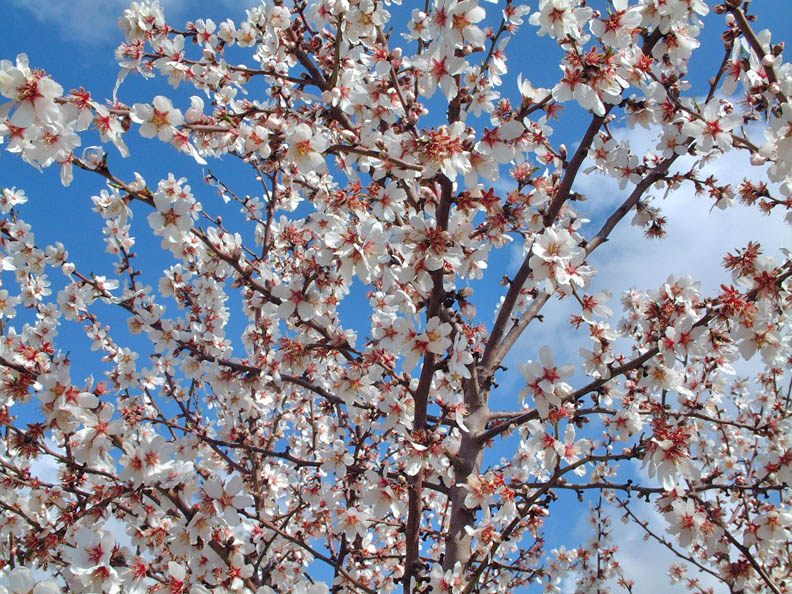March 29, 2013

Whether ground, flaked or toasted, almonds play an important part in our cuisine and a staggering 85% of the world's almonds are grown in the Central Valley; the 450-mile-long, 40- to 60-mile-wide flat-bottomed valley that dominates mid-California.
To get to your kitchen, those almonds have been involved in the biggest single pollination event on Earth.
Californian almond pollination requires billions of honeybees traveling thousands of miles in a nationally coordinated migration operating on a scale that is almost unimaginable to most beekeepers in the UK.
With over 1,000 sq mi of the Valley under almonds, the almond bloom of late spring is a spectacular sight. Almond blossom appears before the leaves emerge and the resulting white and pink flowers make great swathes of the Valley look as if heavy snow has fallen.
There are stretches of these roads where all you can see, from horizon to horizon and for hours on end, is row upon row of blossoming trees planted with absolute precision to ensure the maximum use of this prime agricultural real estate.
You May Also Like




